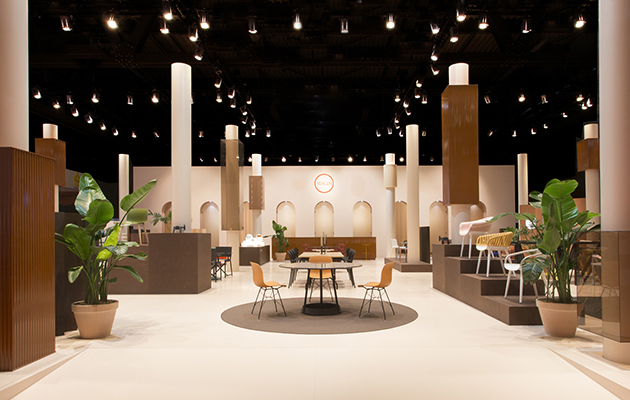Writer and curator Max Fraser goes head to head with designer and author Seetal Solanki on the future of design weeks

Max Fraser
Over the past twenty years, design weeks have evolved from ad-hoc gatherings into fully fledged, sponsor-laden, materially intense festivals. Hardly a self-respecting city in the world can resist touting itself as an important design destination as part of its well-oiled cultural communications. Once grassroots, the design week has become self-consciously slick, as corporate money sloshed its way into every crevice of culture.
But there is still a place for design weeks. They are a forum for ideas to be scrutinised; they provide a commercial podium for industry’s wares; they force us out of our quiet studios and get us talking and forging relationships. These events have become milestone annual moments in the year for designers to showcase fresh ideas, for brands to launch new products and for peers to chat and party.
The problem is, these days, you have to shout to be noticed, since many design weeks have ballooned dauntingly in size. For right or wrong reasons, individual interests prevail, and everyone has something to say – but it’s becoming harder and more expensive to be heard, often giving PRs more power than they merit.
As COVID-19 continues to stall the world, design weeks are reeling with postponements and cancellations. As most design weeks have been born out of existing annual trade fairs (London, Paris, Milan, Stockholm and New York spring to mind), it’s currently a gamble to rebook trade halls for a post-coronavirus era. Furthermore, if exhibiting companies lose their nerve and their cashflow, they may pull out of shows; if visitors still feel uneasy about large gatherings, attendance could be reduced; and if sponsors predict their exposure and return on investment will wane, they may well drop out.
But as in the case of any crisis, it forces change as much as it tests resilience. For years, the industry has been bemoaning the gluttony of production, while devouring novelty. We’ve been playing lip service to sustainability, while adding more frivolity to the seas of stuff. We’ve chastised the corporate agenda of sponsors while pouring into their Instagram-hyped installations.
There’s enough that is great about design weeks for them to regain relevance after this rupture of normality, but their output needs to be rebalanced. The multiple changes afforded by this crisis must be embraced and our collective problem-solving brainpower pushed forward. Perhaps we could start with the questions, ‘what really matters’ and ‘how can we shape it together?’
![]()
Seetal Solanki
Since the postponement of most major annual design fairs and shows, we have been left questioning the role of them altogether. Not just purely the role of design fairs but also the role of designers, architects, artists, the systems that surround them, the communities involved and the business models themselves.
We are left with more moments of solitude to rethink, listen, observe and reflect on our lives as creatives and as citizens. Possibly even to begin to think about the bigger picture – the planet, one another and all other beings within it. For some, this is a privileged position to be in. Reflection can feel unnerving but it can also offer the freedom to recalibrate and shift old habits into ones that can begin to steer us towards ecological alignment and equality, throwing out the bygone eras of excess and newness.
Can we really continue to celebrate design just a week at a time during an entire year, when design is such an integral part of our daily lives? What does this say about the industry and about society in terms of how we value design as a craft and a discipline, as well as the people that are shaping it? I’m most certainly guilty of partaking in plenty of design weeks, as there have been no other platforms for design to be showcased in a way that brings the entire community together from across the globe.
Now more than ever, we need a stronger message which has potency and ultimately proves that design isn’t just a fleeting trend. The infrastructures and mechanisms, or the lack thereof, need to be readdressed entirely. Designers bridge worlds that exist outside of the four-walled confinement of the industry, connecting to agriculture, geology, science, technology and policy. This lends itself to a web-like structure rather than a linear one.
A collective approach is where we need to be heading and this has been further demonstrated by a few luxury fashion houses taking it upon themselves to produce hand sanitisers and face masks for the general public and health workers during the global COVID-19 crisis. This connected mindset and spirit is less about the human ego and more about survival.
Max Fraser is a design writer, curator, consultant and editor of London Design Guide. Seetal Solanki is founder and director of Ma-tt-er, author of Why Materials Matter and textiles tutor at the RCA.
















